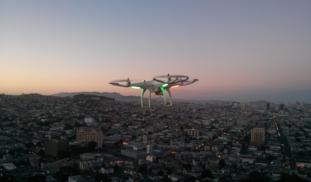Please wait...
About This Project
Many people living in or near large cities are subject to poor air quality. Cities like Detroit are among the top ten most polluted in the USA with respect to particulate matter and ozone. The focus of this project is the development of a gas sensor array that will measures toxic gases. We will attach the array to a commercial "drone" to build vertical atmospheric profiles of pollution in the urban area surrounding Detroit, Michigan.
More Lab Notes From This Project

Browse Other Projects on Experiment
Related Projects
What leads to eruption? A test case at South Sister volcano.
We can't predict eruptions but we can forecast probabilities with enough information. South Sister volcano...
Can alkalinity enhancement remove carbon and restore corals?
Corals Reefs are threatened by warming oceans and acidification, both of which are direct consequences of...
Can lead and limestone contamination of soil and water in mine sites affect agronomic productivity and inhabitants?
The research studies the soil and water metrics of solid minerals in two major mining sites( lead mine at...


